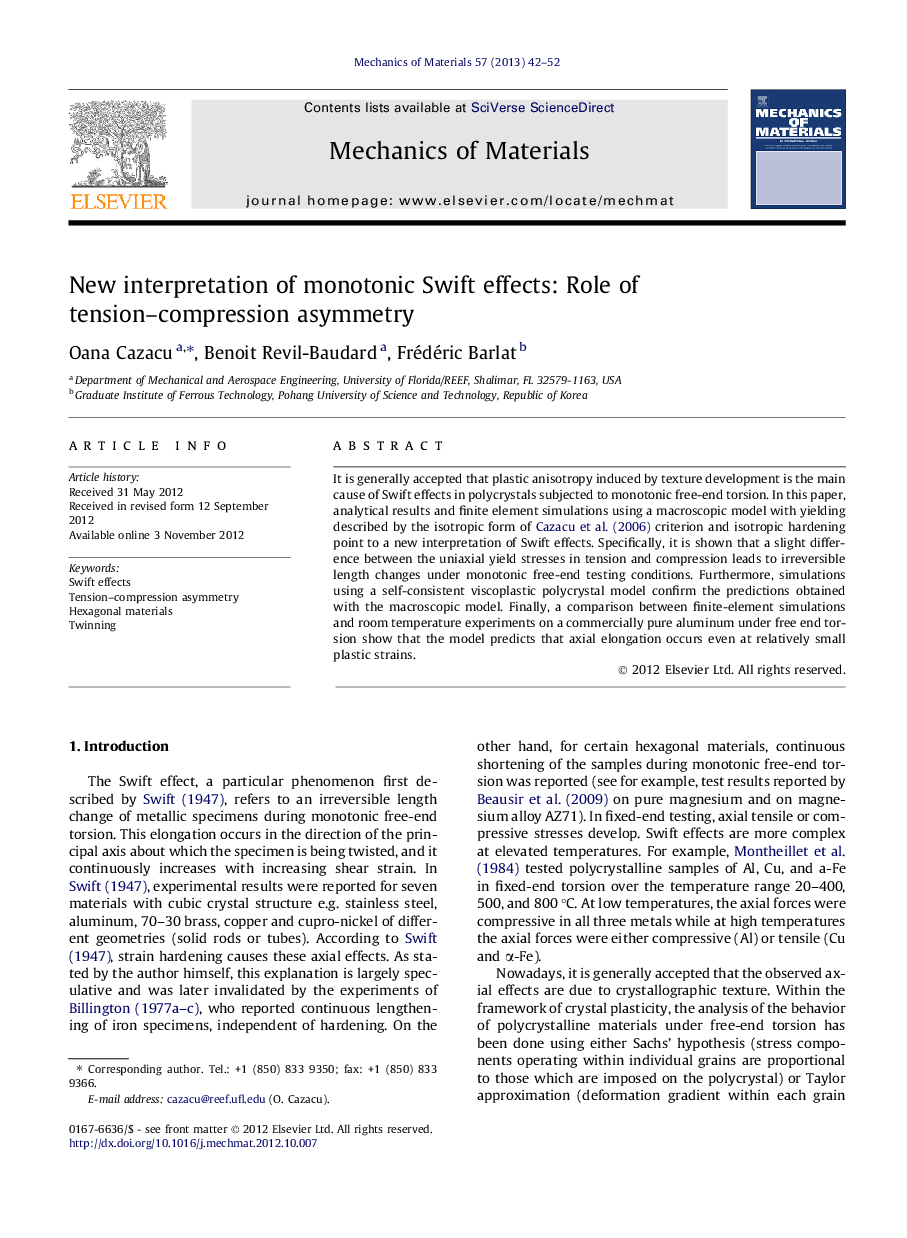| Article ID | Journal | Published Year | Pages | File Type |
|---|---|---|---|---|
| 797600 | Mechanics of Materials | 2013 | 11 Pages |
It is generally accepted that plastic anisotropy induced by texture development is the main cause of Swift effects in polycrystals subjected to monotonic free-end torsion. In this paper, analytical results and finite element simulations using a macroscopic model with yielding described by the isotropic form of Cazacu et al. (2006) criterion and isotropic hardening point to a new interpretation of Swift effects. Specifically, it is shown that a slight difference between the uniaxial yield stresses in tension and compression leads to irreversible length changes under monotonic free-end testing conditions. Furthermore, simulations using a self-consistent viscoplastic polycrystal model confirm the predictions obtained with the macroscopic model. Finally, a comparison between finite-element simulations and room temperature experiments on a commercially pure aluminum under free end torsion show that the model predicts that axial elongation occurs even at relatively small plastic strains.
► CPB06 criterion points to a new interpretation of monotonic Swift effects. ► Length changes explained by ratio between uniaxial tensile and compressive strengths. ► Swift effects in hcp metals are due to anisotropy and tension–compression asymmetry.
